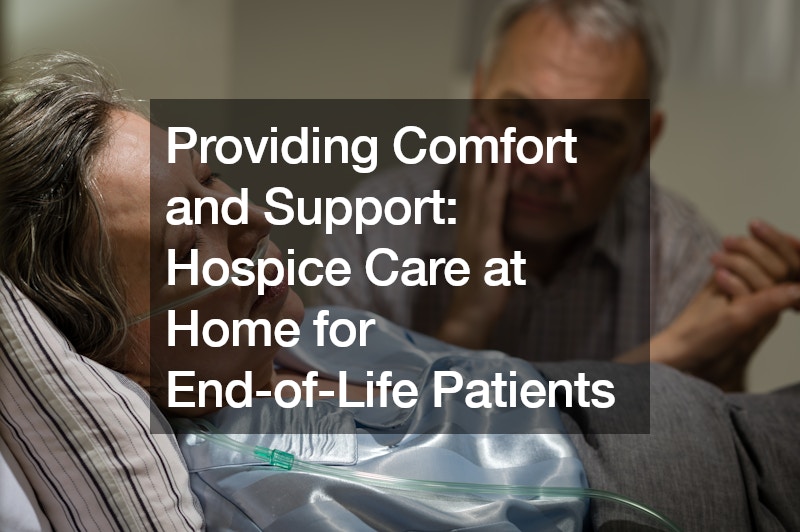In the realm of end-of-life care, hospice care emerges as a beacon of comfort and support for individuals facing terminal illnesses. It’s not merely a service confined to specialized facilities; instead, hospice care extends its compassionate embrace to wherever the patient calls home. Whether it’s the familiar surroundings of their own house, a nursing home, or even a hospital, hospice care is a philosophy that prioritizes comfort and dignity above all else.
At its core, hospice care emphasizes a philosophy of care aimed at ensuring patient comfort and dignity throughout the end-of-life journey. This approach entails limiting aggressive medical interventions and instead focusing on alleviating pain and other distressing symptoms.
The overarching goal is to facilitate a natural death while providing comprehensive support to both the patient and their family members.
The cornerstone of hospice care lies in its interdisciplinary team, comprising dedicated professionals who work collaboratively to meet the diverse needs of patients and their families. At the forefront are nurses and social workers who play pivotal roles in delivering hands-on care and providing invaluable emotional support. Additionally, hospice teams often include spiritual care providers, bereavement counselors, home health aides, and medical directors, all working together to ensure holistic patient care.
Contrary to common misconceptions, hospice care is not confined to a specific location or facility. Instead, it adapts to the patient’s environment, whether that be the comfort of their own home or another care setting. The essence of hospice care lies in the philosophy of providing comfort and support wherever the patient resides, ensuring they receive compassionate care tailored to their individual needs.
One prevalent myth surrounding hospice care is the notion that it entails round-the-clock medical attention. However, in reality, hospice care relies on the support and involvement of the patient’s family members or caregivers, especially when care is provided at home. While the hospice team offers guidance, expertise, and occasional visits, it’s the family members who often provide continuous care and emotional support to the patient throughout the day and night.
Another misconception is the belief that hospice care involves discontinuing all medications. In truth, hospice care emphasizes a patient-centered approach, where decisions regarding medication management are made collaboratively with the patient, their family, and their healthcare provider. Rather than focusing solely on aggressive treatments, hospice care aims to optimize symptom management and enhance the patient’s quality of life in their remaining days.
In essence, hospice care at home embodies a philosophy centered on compassion, dignity, and personalized support for individuals nearing the end of their lives. By embracing this holistic approach, patients and their families can find solace in knowing that they are not alone on their journey. Instead, they are surrounded by a dedicated team of professionals and loved ones who are committed to providing comfort and support every step of the way.
In conclusion, hospice care at home represents a beacon of compassion and support for individuals facing terminal illnesses. By dispelling common misconceptions and embracing the philosophy of patient-centered care, hospice teams empower patients and their families to navigate the end-of-life journey with dignity, comfort, and peace of mind.
Actionable Steps for Families:
1. Establish Clear Communication: Ensure open and honest communication with the hospice team regarding the patient’s needs, preferences, and goals of care. This fosters collaboration and ensures that everyone is on the same page.
2. Create a Comfortable Environment: Arrange the patient’s living space to optimize comfort and accessibility. This may include installing handrails, adjusting furniture, and creating a peaceful ambiance with soothing music or soft lighting.
3. Implement a Pain Management Plan: Work closely with the hospice team to develop a personalized pain management plan tailored to the patient’s specific needs. This may involve medication adjustments, relaxation techniques, or alternative therapies such as massage or acupuncture.
4. Provide Emotional Support: Offer emotional support to the patient and their family members by actively listening, offering reassurance, and providing companionship. Encourage open discussions about fears, concerns, and memories, fostering a sense of connection and closure.
5. Take Care of Yourself: As a caregiver, prioritize self-care to prevent burnout and maintain your own well-being. Seek support from friends, family members, or support groups, and don’t hesitate to ask for help when needed.
Alternative Approaches and Examples:
– Respite Care Services: Consider utilizing respite care services offered by hospice agencies, which provide temporary relief for family caregivers. This allows caregivers to take a break, attend to personal needs, or simply recharge while ensuring that the patient’s needs are still met.
– Virtual Support Networks: Explore virtual support networks and online communities for caregivers, where individuals can connect with others facing similar challenges, share experiences, and access valuable resources and information.
– Legacy Projects: Engage in meaningful activities such as creating legacy projects, recording family memories, or compiling photo albums to celebrate the patient’s life and preserve cherished memories for future generations.
– Pet Therapy Programs: Participate in pet therapy programs offered by hospice agencies, where trained therapy animals provide companionship, comfort, and emotional support to patients and their families. These interactions can bring joy, laughter, and a sense of normalcy during difficult times.
By incorporating these actionable steps and alternative approaches, families can enhance the quality of life for their loved ones receiving hospice care at home, fostering a supportive and comforting environment during the end-of-life journey.
.


